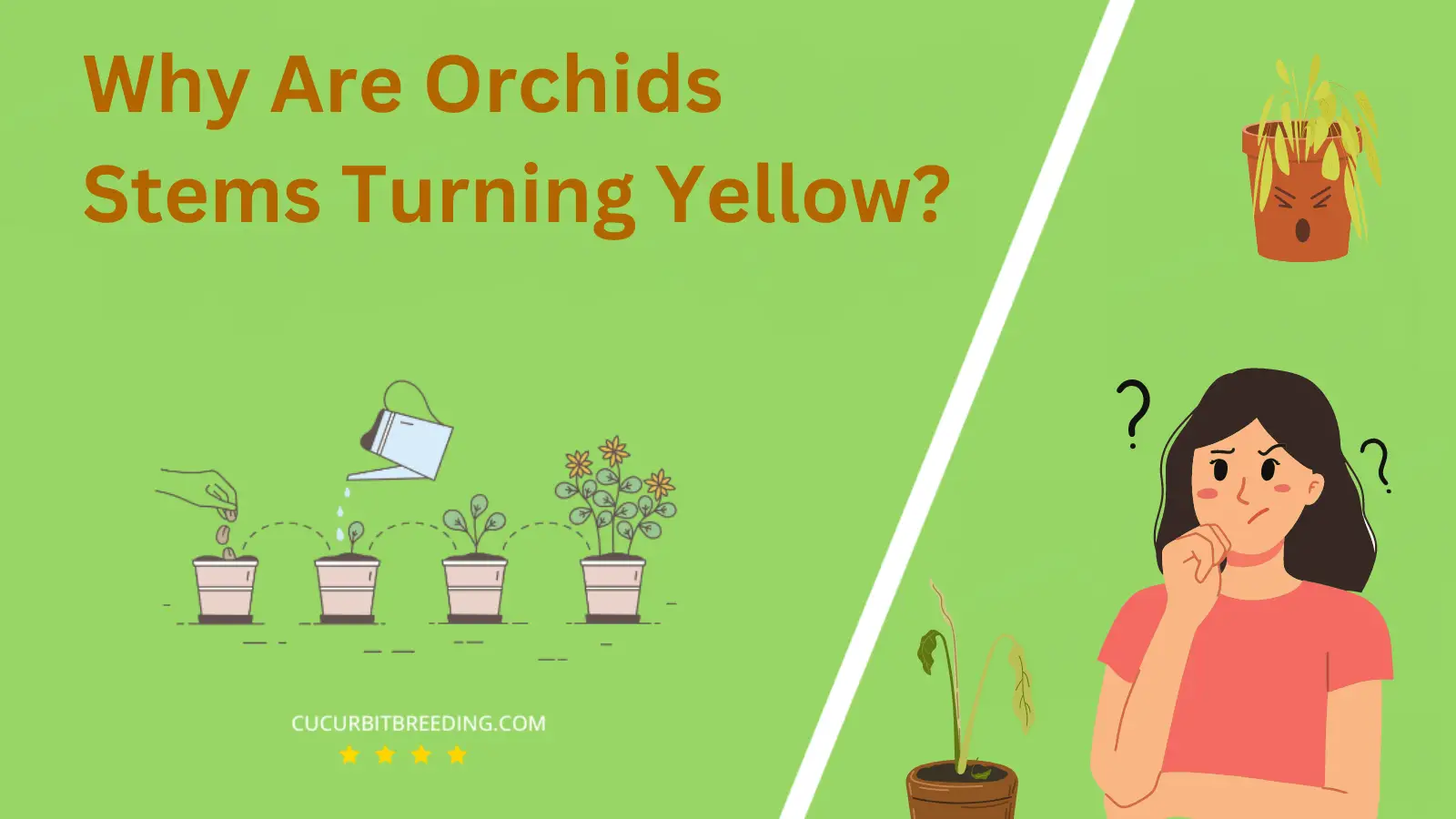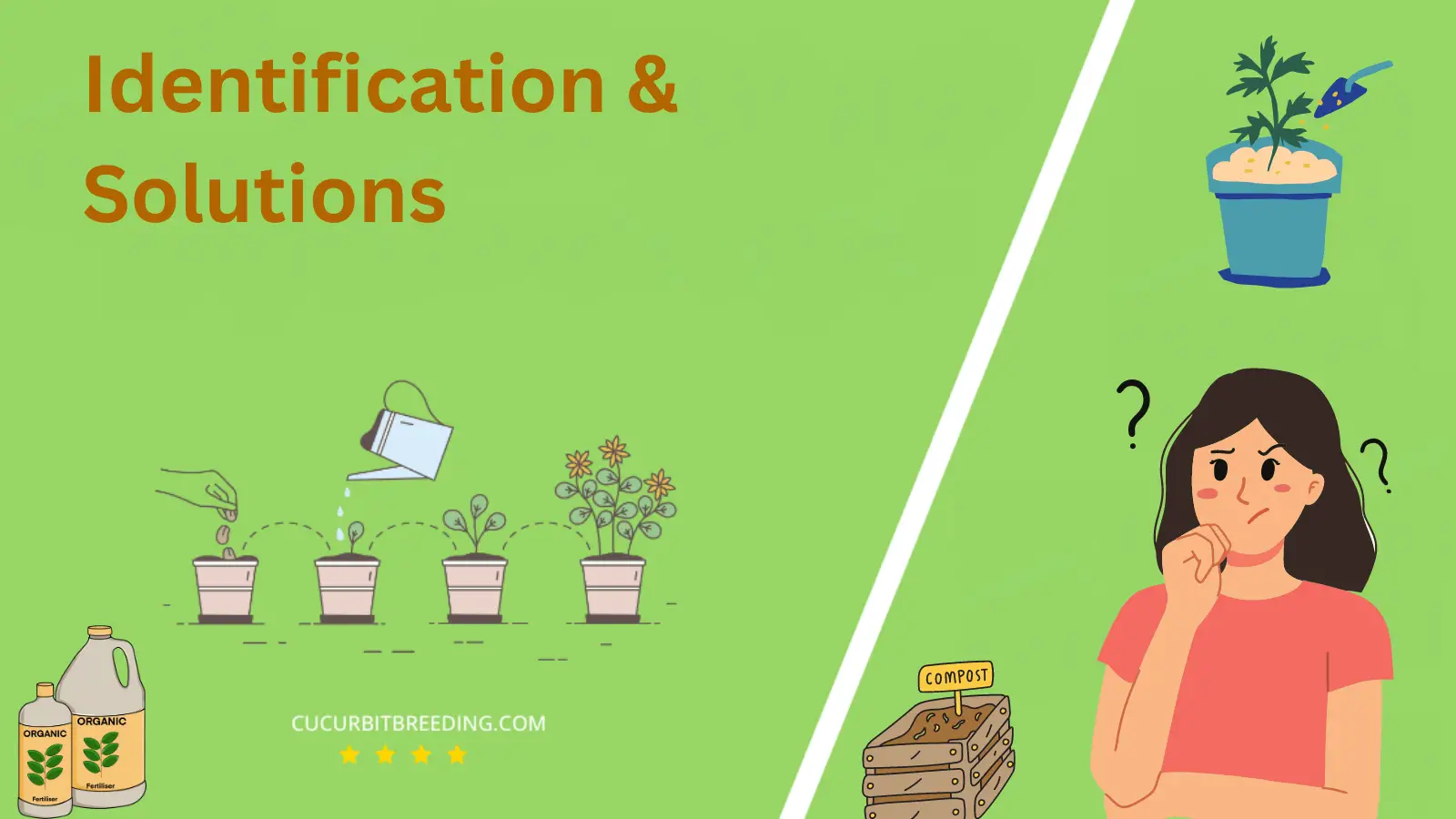
As an expert gardener, it’s common to receive questions like, “Why are Orchids stems turning yellow?” This intriguing query clearly indicates a concern regarding the health of the beloved Orchid.
Before diving into the nitty-gritty of the matter, let’s understand that Orchids are a diverse family of spectacular flowering plants, each requiring specific care. Intricacies in their care often lead to puzzling symptoms. And one such baffling behavior? Yellowing stems.
Why Are Orchids Stems Turning Yellow?
1. Overwatering
| Description | Overwatering can cause orchid stems to turn yellow by depriving roots of oxygen and nutrients. |
|---|---|
| Solution | Reduce watering frequency and ensure proper drainage to prevent root rot and yellowing of orchid stems. |
Orchid stems can turn yellow due to overwatering. Overwatering can lead to the accumulation of excess water in the plant’s root zone, which can lead to root rot. The health of the roots directly affects the plant’s stem and leaves.
When the plant cannot effectively draw nutrients due to damaged roots, its overall appearance tends to suffer, often resulting in yellowing stems. Root rot is often characterized by moldy, mushy roots. If your orchid’s roots do not appear thick and plump, excess watering might be the cause of your problem.
To rectify this situation, you should first reduce the watering frequency. Orchids do not need daily watering. Instead, it would be best if you watered them once a week or every ten days, depending on the orchid type, potting mix, and your local climate conditions.
If your orchid already has yellow stems due to overwatering, consider repotting the plant. Use a well-draining potting mix, such as sphagnum moss or bark mix, to ensure proper water drainage. Utilising a pot with ample drainage holes may also be beneficial.
In summary, less frequent watering and proper drainage is crucial in preventing the stems of orchids from turning yellow due to overwatering.
2. Underwatering
| Description | Insufficient water supply causes orchid stems to turn yellow, solutions include adjusting watering frequency. |
|---|---|
| Solution | Increase watering frequency and ensure proper drainage to prevent underwatering and yellowing of orchid stems. |
The yellowing of orchid stems is often a symptom of underwatering. Underwatering results in the plant not receiving enough moisture to maintain its metabolic activities, which in turn stresses the orchid and causes it to change color.
To remedy this, it’s important to increase your watering regimen. Orchids should be watered thoroughly once the potting media has dried out, usually every 5 to 12 days. Also, using a potting media that retains water well, such as sphagnum moss, can help keep the plant hydrated.
Ensure the orchid is in a well-ventilated area with sufficient humidity. Avoid cold drafts or heating vents that might dry out the plant. Using a tray with water and pebbles can increase the humidity around your orchid without overwatering.
Remember, underwatering is just as harmful for your orchid as overwatering. Ensuring a balance that varies with the season is crucial for your orchid’s well-being.
3. Lack of sunlight
| Description | The yellowing of orchid stems is caused by insufficient exposure to sunlight. |
|---|---|
| Solution | Increase exposure to sunlight to prevent orchid stems from turning yellow. |
Impacts of Insufficient Sunlight: Orchids, like most plants, perform photosynthesis, a process in which they use sunlight to convert carbon dioxide and water into glucose for their growth and development. When orchids don’t receive enough sunlight, they cannot effectively perform photosynthesis. This can lead to a variety of symptoms, including the yellowing of stems. It’s because the chlorophyll, the pigment responsible for the green color and photosynthesis, starts to break down, leading to a yellowish hue.
Solutions: Rectifying this issue primarily involves addressing the lack of sunlight. First, ensure your orchid is in a location where it receives appropriate sunlight–bright but indirect light is best for most orchid varieties. East-facing windows are excellent choices. If natural sunlight is not sufficient, consider using grow lights specially designed to provide the full spectrum of light that plants need. Secondly, monitor your orchid’s health regularly to ensure it doesn’t show symptoms of light deficiency. An annual repotting can also promote healthier growth and provide an opportunity to inspect the plant’s overall health closely.
4. Nutrient deficiency
| Description | The yellowing of orchid stems is caused by insufficient exposure to sunlight. |
|---|---|
| Solution | Increase exposure to sunlight to prevent orchid stems from turning yellow. |
Nutrient deficiency, specifically a lack of important elements like nitrogen, can cause orchids’ stems to turn yellow. This is because these elements play crucial roles in maintaining the green color (chlorophyll) of plant tissues. Without sufficient quantities of these crucial nutrients, the orchid’s ability to photosynthesize is compromised, resulting in yellowing of the stems.Nitrogen, in particular, is essential for leaf growth and development; without it, you may observe yellowing in the stems and leaves.
To solve this problem, you should conduct a proper diagnostic to identify the exact nutrient deficiency. Depending on the result, apply an appropriate soluble orchid fertilizer with a balanced N-P-K ratio (Nitrogen-Phosphorous-Potassium) or one that is slightly higher in nitrogen. This should help revitalize your orchid. Moreover, ensure your orchid is receiving sufficient light, as well as an adequate watering schedule to enable the absorption of these nutrients. Over time, you should notice a healthy change in the color of your orchid’s stems.

5. Pest infestation
| Description | Increase exposure to sunlight to prevent orchid stems from turning yellow. |
|---|---|
| Solution | Treat pest infestation to prevent orchid stems from turning yellow. |
Orchid stems turning yellow can be a clear sign of a pest infestation. Pests such as scale, aphids, spider mites, and thrips can exhaust orchids of their essential nutrients, causing the plant’s stems to turn yellow. These pests attach to the plant, draining it of its sap, which serves as the major life-supporting component.
Addressing a pest infestation starts with correctly identifying the pests. For minor infestations, you can remove the pests manually using a cloth or a soft brush. Regular inspection and cleaning of your plants can also help prevent further invasions. In severe cases, it might be necessary to use insecticides, or organic solutions like neem oil or insecticidal soap. The affected part of the plant may also need to be pruned to prevent the spread of the infestation.
Another preventive measure is to avoid overwatering or underwatering your orchids as stress from improper watering can make them vulnerable to pests. Maintaining proper growing conditions, which include appropriate light, temperature, and humidity levels, is crucial for the overall health of your orchids and their resistance to pests.
6. Disease or fungal infection
| Description | Yellowing of orchid stems can occur due to disease or fungal infection, affecting their physiology. |
|---|---|
| Solution | Treat yellowing orchid stems with an appropriate fungicide or seek professional advice for diagnosis. |
When orchids are affected by a disease or fungal infection, one of the first visible signs can be yellowing of their stems. This yellowing, technically referred to as chlorosis, is the result of decreased chlorophyll production. Since chlorophyll is essential for photosynthesis, these diseases or infections can impair the orchid’s ability to produce its food. As the disease progresses, the yellowing can spread throughout the plant, causing it to weaken, withered, and eventually die.
The primary solution is to address the disease or fungus causing the problem. This may involve using a fungicide or pesticide, depending on the specific pathogen identified. It’s crucial that you follow the product’s directions, as overuse can lead to further damage. Additionally, you should remove any infected plant parts to prevent the disease from spreading. Healthy orchids are less susceptible to diseases and fungi, so ensure your orchid is getting the appropriate light, water, temperature, and humidity.
7. Natural aging process
| Description | The natural aging process of leaves causes them to turn yellow due to reduced chlorophyll production. |
|---|---|
| Solution | Maintaining a healthy lifestyle with regular exercise and a balanced diet can slow down natural aging. |
Orchid stems may turn yellow because of overwatering. Overwatering causes the roots to become waterlogged and oxygen-starved. Since the roots are unable to perform their function properly, they can’t absorb water and nutrients as efficiently. This results in yellowing of the stems and other plant parts as they undergo stress and nutrient deficiencies.
To resolve this issue, you need to adjust your watering schedule. Water your orchid only when the top inch of the soil feels dry to the touch. Be careful not to let the plant sit in standing water as this can also lead to root rot. Apart from this, ensure that your orchid is planted in well-draining soil and housed in a pot that allows excess water to escape. If the plant is severely overwatered, it may be necessary to repot the orchid in fresh soil and trim away any rotting roots.